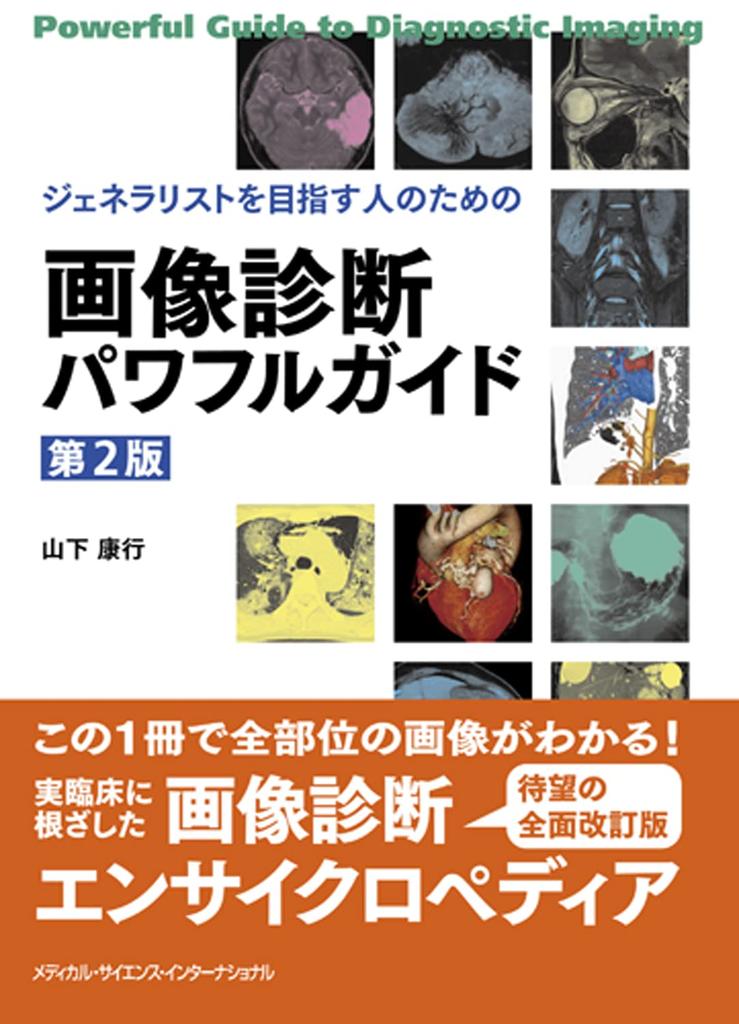The first edition of "A Powerful Guide to Diagnostic Imaging for Aspiring Generalists" was published in 2014. As stated in the preface to the first edition, I wrote this book with the aim of covering diagnostic imaging that looks at the whole body. Perhaps because there had been few books covering whole-body diagnostic imaging at a relatively high level—that of a specialist—it was well received and has been reprinted several times. A distinctive feature of the first edition was that, rather than listing the detailed findings of diagnostic imaging, it succinctly introduced the pathophysiology and pathology of important diseases and then introduced the latest diagnostic imaging techniques. The basic concept was that understanding pathology and pathology is paramount in diagnostic imaging, and that by keeping this in mind, images can naturally be understood.
Eight years have passed since the publication of the first edition, and great progress has been made in elucidating pathology. Knowledge, particularly at the genetic level, has increased significantly. Disease classification has also changed significantly, with new disease concepts being introduced. In response to these changes, a wide range of knowledge has also been accumulated in the field of diagnostic imaging.
Meanwhile, I have retired from Kumamoto University and have now spent over 40 years as a radiologist. During this time, diagnostic imaging has made great advances, particularly with CT and MRI, and I feel truly fortunate to have been able to build my career alongside these advances. Another asset is that such CT and MRI image data are stored digitally on image servers in a readily accessible format, and remain alongside diagnostic reports and clinical information. While working at Kumamoto University, I made an effort to be exposed to as many images as possible and created digital teaching files, which I was able to make great use of when writing this book.
In this revision, I have incorporated as much new clinical knowledge as possible and covered as many diseases as possible that are considered necessary for a generalist in diagnostic imaging. As a result, the page count has increased significantly, resulting in a massive volume approaching 900 pages. As with the previous edition, each disease is designated by a symbol A, B, or C. A is a basic disease that is essential for medical students and junior residents, B is a disease that is generally of minimum importance to specialists, and C is a somewhat more difficult disease that specialists should ideally be able to cover.
It was extremely challenging for me to cover all medical advances in the field of whole-body imaging alone, and despite my limitations, I managed to complete it. In a sense, I consider this book to be the culmination of my career as a diagnostic radiologist. Although it is quite heavy, I hope that many imaging specialists and those interested in imaging diagnostics will pick it up.
Finally, I would like to express my sincere gratitude to Osamu Masaji, who once again contributed to the publication of this book and realized my life's work.
August 2022
Yasuyuki Yamashita
This is the first complete revision in eight years of Japan's only powerful guide to whole-body imaging diagnostics. It retains the basic concepts of explaining imaging diagnostics based on the pathophysiology and pathology of diseases that generalists should know. Each chapter also includes a new page summarizing the concepts of differential diagnosis (diagnostic approach). The title disease sections are categorized into three levels of difficulty, allowing readers to learn at their own pace. The number of title diseases has increased from 381 to 406, and the PowerUp column has been expanded to include as many related diseases as possible, significantly increasing the volume!
















![Reader's English-Japanese-Chinese Dictionary, 2nd Edition [Regular Edition]](https://img.joomcdn.net/9ec6033d1466b12290e1b7e9c8ef743ab4a4e962_74_100.jpeg)













